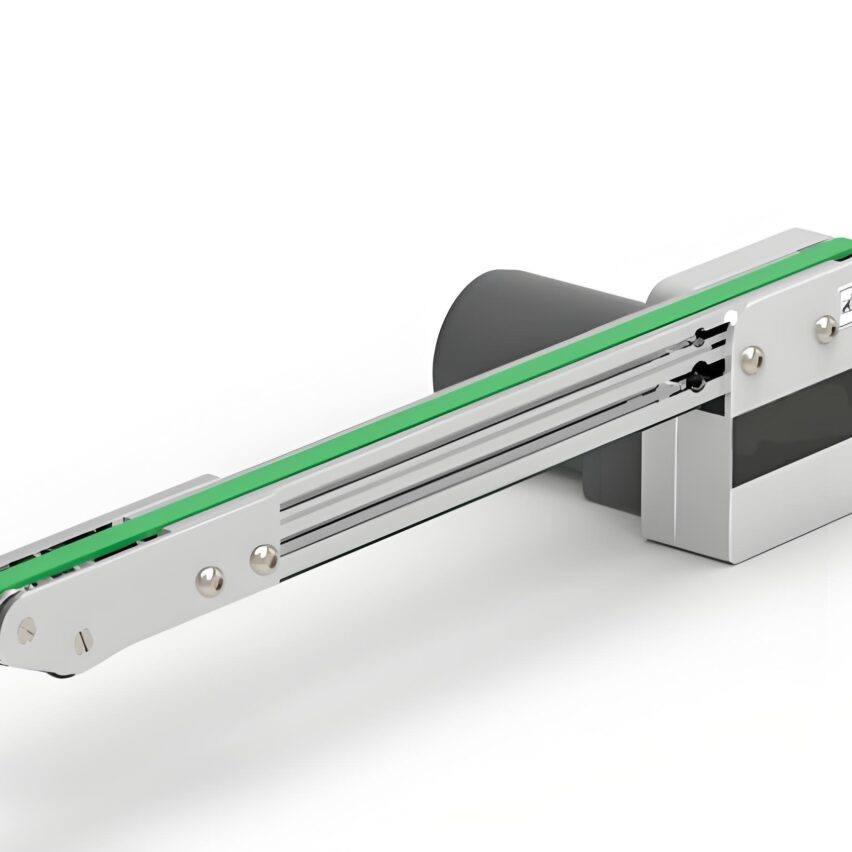You must have seen this situation: the box in the conveyor line straight ahead as stable as Mount Taishan, a curve into a ball or even jammed motionless! Don't panic, today we will break open the crumbs to speak through the design of the turning radius of the roller line doorway - from the principle of the formula to the actual pit avoidance, to ensure that the next time you design the curves have a clear idea in mind!
I. What is the turning radius? Why does it make goods turn?
core principleIn fact, it is very simple: Imagine you drive through a sharp curve, the steering wheel hit hard will turn over, hit slow turn can not pass. It's the same with conveyor line turns -If the radius is too small, the goods can't be moved on the inside; if the radius is too big, it takes up space and burns money.!
Why do you have to count the radius?
- Physical hard constraints: The diameter (D) and taper (K) of the small end of the roller directly locks in the minimum radius. The formula is laid out here:
Minimum turning radius R = (taper roller small end diameter D - frame clearance c) / taper K
(Rack clearance c recommended ≥ 5mm, otherwise thermal expansion and contraction will scratch) - Cargo length is a lifeline: the radius R must be ≥1.2 times cargo length L! For example, for a 1 metre long box, the turning radius is at least 1.2 metres. Otherwise? The back half of the box is still stuck on the straight, the front half has been thrown off!
- Industry standards are the bottom line: The common radii are 600, 900, and 1200mm, but don't be a hard ass -The actual selection is one level larger than the calculated value(e.g., figure out 816mm and select 880mm rollers directly).
history of bloodshed in the workshop: An auto parts factory hard to plug the 800mm radius curve to transport the engine, the result of the inside of the pallet hit the frame deformation, stop production for three days loss of millions!
II. How is the radius calculated? Where to find standard values?
Hands down, three steps to get it right::
Step 1: Measurement of goods
- Length L: directly determines the lower limit of the radius (R ≥ 1.2L)
- Width W: affects roll length (roll length = W + 50 mm)
Step 2: Check the parameters of the cone roller
| Small end diameter D | Taper K | Usable turning radius |
|---|---|---|
| 52.9mm | 1/16 | 830mm |
| 56mm | 1/16 | 880mm |
| 52.9mm | 1/30 | 760mm |
| Data source: industry generic specification sheets |
Step 3: Set formula verification
Case: conveying 800mm long wooden box, taper roller small end D=56mm, taper K=1/16, frame clearance c=5mm
→ Calculated value R=(56-5)/0.0625≈816mm →Selection of 880mm standard rollers(81 TP3T greater than calculated)
Where to find standard parts?
- Brand brochure: Interroll and other major manufacturers offer 25 pre-set radius modules
- Design specification: 600-900mm for light load, 1200mm or more for heavy load.
Third, what happens if you hardwire a small radius? Three major rollover sites + solutions
Scenario 1: Not enough space to only use a small radius
- scene of the disaster: Inside cargo hitting frame, outside overhanging and overturned
- solution (a math problem)::
- use (sth. different)Bi-Taper Roller(Inside and outside taper difference 0.5°-1°), the same radius under the correcting force ↑ 30%
- retrofittingDynamic guide wheel(Pressure adjustment 50-200N), "break" the goods back to the track.
Scenario 2: Turning of long steel tubular goods
- scene of the disaster: The back half is still on the straight, the front half is already twisted.
- solution (a math problem)::
- Segmented differential speed! Speed gradient every 30° (inner roller speed reduction 10%-20%)
- plusAuxiliary support wheels(Spacing ≤1/3 of cargo length), anti-sagging in the centre
Scenario 3: Stainless steel roller slippage in wet workshop
- scene of the disaster: Cargo drifting around corners, workers running after it
- solution (a math problem)::
- roller surfaceCoated polyurethane(Hardness 60 Shore D), Coefficient of Friction↑50%
- riggutter+ Rollers with IP67 protection class
My private experience: designing bends with "white space", testing is more reliable than calculations!
After ten years of conveyor line design, I'm most afraid of newcomers who are dead set on formulas. Share three iron rules:
- A larger radius is better than a smaller one.The calculated value is 880mm? 900mm is selected directly.10%'s space margin saves 50% aftermarket costs--A one hour stoppage of the production line can cost you enough to add three sets of rollers!
- Dynamic bias adjustment is more important than static calculation: Recently did lithium battery workshop project withVisual Deskew System(5000fps camera + PID control) Presses the offset to <2mm, which is 3x better than designing purely on radius.
- You can't skip the 72-hour violence test.: Emergency stop with full load (deceleration 3 m/s²) according to ISO 20278 -Offset over 10mm?
Curve design is, after all, the art of balance.Physical laws should be respected, field conditions should be compromised, and testing and verification should be ruthlessThe three axes are the best way to make your conveyor line bends smooth and stable. Follow these three axes and your conveyor line bends will be smooth and steady!













